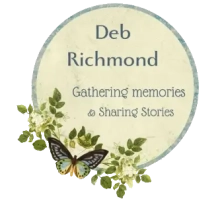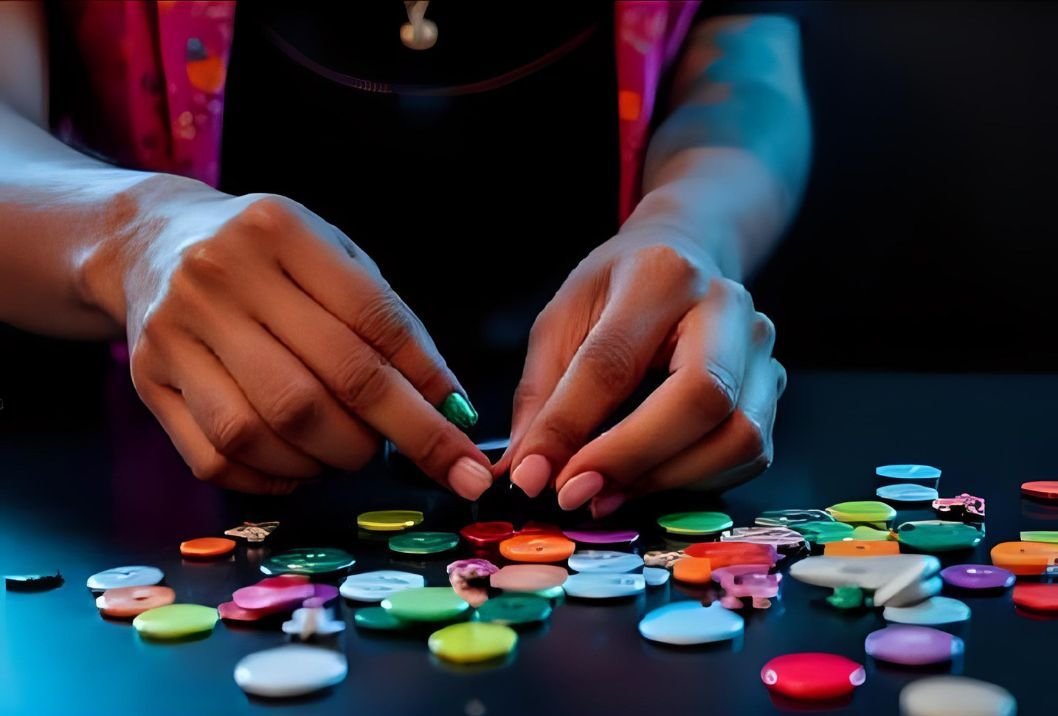When I was a little girl, electronic devices were nowhere to be found. My family didn’t get a television set until 1969 when my dad wanted to watch the Apollo 11 moon landing. For indoor fun, I turned to coloring pages, storybooks, empty cardboard boxes, and paper dolls. Thinking back to those days, I confess one of my favorite childhood pastimes was playing with buttons. Say that to a group of middle schoolers, and their jaws will drop in horror. Not many children today have learned the art of playing with buttons.
The Old Coffee Can
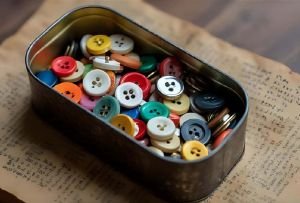
First, I’d inspect the buttons, seeking out the glittery silvers, the black-and-gold trims, the vibrant crimson reds. Then, the sorting would begin. I had a dozen different ways to organize the buttons: by color, by size, by shape. There were mother-of-pearl two-hole fisheye buttons, wooden toggles, shell buttons, ancient marble buttons, and metal shanks with holes on the back. Occasionally, a cutesy rose-shaped plastic button would appear, and I’d weave it into an imaginative story. Today, Aunt Jo’s button collection might be worth a small fortune, but to her, its true value lay in keeping a curious and busy child entertained for hours.
the New Coffee Can
I thought my button-sorting days were over, replaced by video games, an e-reader stocked with bestsellers, and social media. In recent years, I discovered that I was still playing with buttons. One day at school, I noticed that my students had turned the classroom library into a chaotic mess. I went to work sorting buttons. First, I placed biographies and autobiographies on one shelf. I grouped all the sci-fi series together, and I segregated the chic lit from the goofy boy books.
A few days later, I found myself tidying my grandson’s play area, categorizing Hot Wheels, Duplo blocks, and foam alphabet letters. That’s when it hit me—I enjoy doing this. I remembered Aunt Jo’s buttons and longed for another go at them. I thought I was merely being efficient.
That super-sized crayon box makes me drool, not for the potential art I will create but for the sheer joy of reorganizing by color theme. I’ve arranged my sock drawer and movie DVD collection in a logical order; my closet displays a rainbow of color from dark blues to pastels. Even my idea file for newsletter topics incorporates a system of categories and subcategories. I love sorting jigsaw puzzle pieces and playing video games that allow me to collect and organize resources—it’s all the same thrill.
What Happened to the Coffee Can?
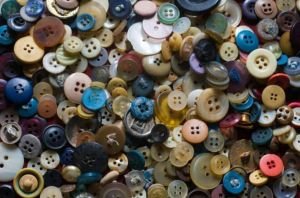
When did we lose the knack for sorting by color or purpose or character trait? Why have we forgotten how to group like objects together, recognize patterns, and appreciate the nuances of classification? I suspect it has something to do with the struggle to master writing skills, reading comprehension, mathematics, and the scientific method, but I fear it’s too late to hand students a coffee can full of buttons.
I don’t have a solution to this puzzle, nor do I fully grasp how it all connects. Besides, I just noticed a pair of flip-flops in the shoe bin with all the sneakers. I have work to do, and I’m going to enjoy every minute of it.
PostScript – I’m finding that some amazing kids figure out how to master the skills of sorting and organizing without buttons!
This was a visit to the Hershey Children’s Museum with my granddaughter, a natural (or maybe a trained) organizer.
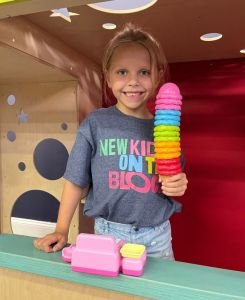
To see more beautiful buttons (sorted by categories!):
Value of Vintage Buttons on Etsy
To read more stories about days gone by:
